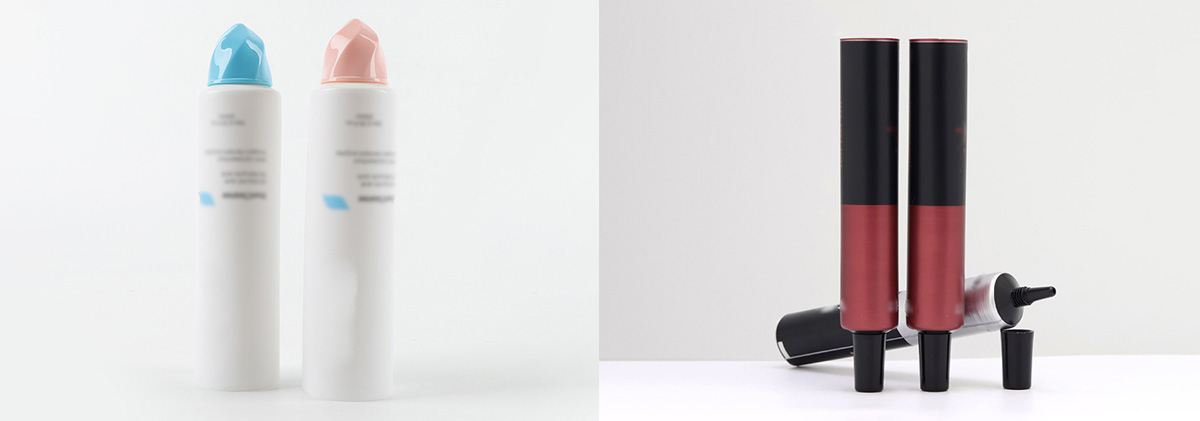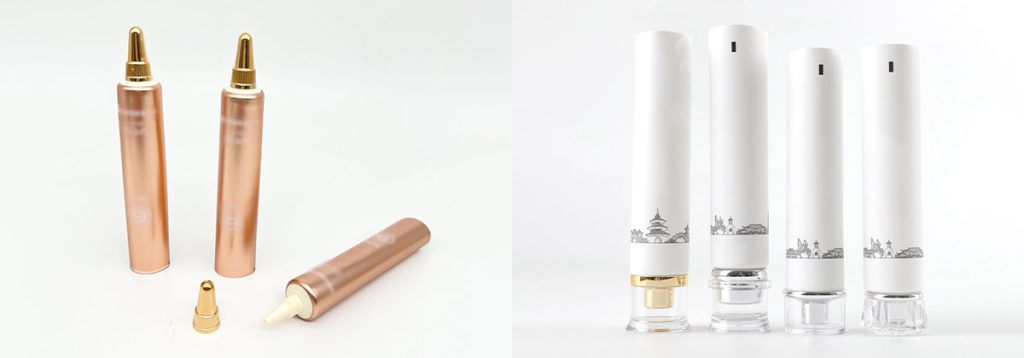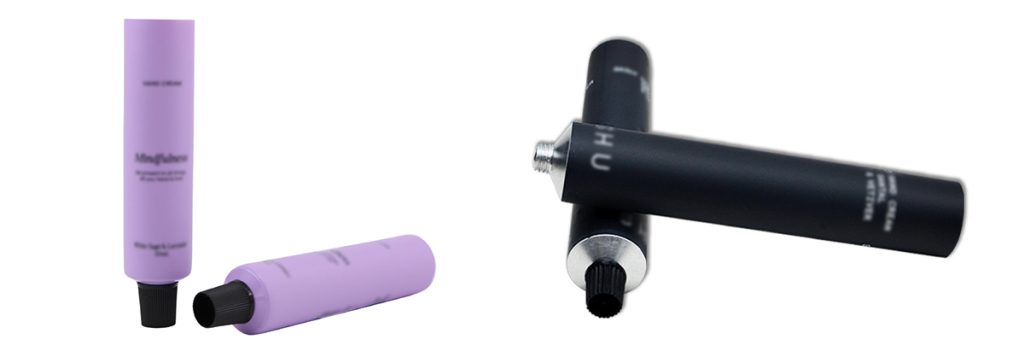

Quarterly and annual overhauls refer to scheduled, comprehensive evaluations and servicing of a lami tube making machine at set intervals. These structured maintenance routines help operators catch problems early and keep the equipment running safely. Regular inspections and organized checklists play a key role in preventing breakdowns and extending machine lifespan. The table below highlights the most common benefits seen in industrial settings:
| Benefit | Description |
|---|---|
| Improved Efficiency | Regular maintenance detects and fixes issues, keeping machinery at peak performance. |
| Extended Lifespan | Proactive care slows wear, prevents breakdowns, and lengthens equipment life. |
| Enhanced Safety | Inspections reveal safety risks, helping maintain compliance with standards. |
| Prevention of Breakdowns | Structured schedules catch problems early, reducing downtime and costs. |
A proactive approach to maintenance leads to better performance and less downtime for both industrial and home environments.
Key Takeaways
- Regular quarterly overhauls help catch small problems early, preventing unexpected breakdowns and ensuring smooth production.
- Annual overhauls involve deeper inspections and part replacements, which enhance the long-term reliability of the laminated tube making machine.
- Using structured checklists during maintenance ensures no critical steps are missed, improving safety and efficiency.
- Proper documentation of maintenance activities helps track recurring issues and supports compliance with industry standards.
- Adopting preventive maintenance practices at home can extend the lifespan of appliances and reduce costly repairs.
Overhaul Types
Quarterly Overhaul
A quarterly overhaul focuses on routine maintenance tasks that keep the lami tube making machine in good working order. Technicians inspect moving parts, lubricate essential components, and check for wear or damage. They clean filters and replace minor consumables. Operators often use a checklist to track each step. This approach helps identify small problems before they become serious.
Tip: Regular quarterly checks reduce the risk of unexpected breakdowns and keep production schedules on track.
Common quarterly tasks include:
- Lubricating gears and bearings
- Inspecting belts and chains for tension
- Cleaning dust and debris from surfaces
- Checking electrical connections
Annual Overhaul
An annual overhaul involves a deeper inspection and more extensive servicing. Technicians disassemble major sections of the machine. They examine critical components such as motors, control panels, and hydraulic systems. Parts that show significant wear get replaced. The team also calibrates sensors and tests safety systems.
Note: Annual overhauls often require more time and specialized tools, but they ensure long-term reliability.
Annual overhaul checklist:
- Disassemble and inspect main assemblies
- Replace worn or damaged parts
- Calibrate and test sensors
- Review safety features and compliance
Key Differences
Quarterly and annual overhauls differ in scope and depth. Quarterly overhauls focus on routine checks and minor fixes. Annual overhauls address major repairs and system upgrades.
| Aspect | Quarterly Overhaul | Annual Overhaul |
|---|---|---|
| Frequency | Every 3 months | Once per year |
| Scope | Basic maintenance | Comprehensive inspection |
| Time required | Short | Extended |
| Parts replaced | Minor consumables | Major components |
Quarterly overhauls maintain daily performance. Annual overhauls protect long-term machine health. Both types work together to prevent costly downtime and ensure safe operation.
Lami Tube Making Machine Overhaul
Inspection Checklist
A thorough inspection forms the backbone of every successful overhaul for a lami tube making machine. Operators and technicians rely on a structured checklist to ensure no detail gets overlooked. This approach helps maintain the integrity of both the machine and the laminated tubes it produces. The following table outlines essential inspection items and their descriptions:
| Inspection Item | Description |
|---|---|
| Visual Inspection | Conduct a thorough visual examination for damage, rust, and cleanliness of the machine. |
| Safety Features | Examine emergency stop buttons, machine guards, and safety labels for functionality and clarity. |
| Worn Parts and Routine Service Needs | Identify parts needing replacement and check fluid levels and filters for maintenance. |
Operators should begin with a visual inspection. They look for any signs of damage, rust, or contamination on the lami tube making machine. Next, they test all safety features, including emergency stops and guards, to confirm proper operation. The checklist also includes reviewing parts that often wear out, such as belts and seals, and checking fluid levels. This process ensures the machine remains safe and efficient.
Tip: Using a printed or digital checklist reduces the risk of missing critical inspection steps during quarterly or annual overhaul tasks.
Common Issues
During overhauls, technicians often encounter recurring problems that affect the performance of a lami tube making machine. Damage to moving parts ranks among the most frequent issues. For example, worn gears or misaligned rollers can cause defects in the laminated tube output. Electrical faults, such as loose connections or faulty sensors, may interrupt production and require immediate repairs.
Hydraulic leaks and contamination also pose significant risks. These problems can lead to further damage if left unaddressed. Operators sometimes find that filters clog or that lubrication systems fail, which increases friction and accelerates wear. Regular repairs and prompt attention to these issues prevent small problems from escalating into major breakdowns.
Alert: Ignoring early signs of damage can result in costly repairs and extended downtime for the lami tube making machine.
Tools Needed
Proper tools make every overhaul more efficient and thorough. Technicians working on a lami tube making machine should prepare a toolkit before starting any inspection or repairs. Essential tools include:
- Wrenches and screwdrivers for disassembling panels and components
- Calipers and micrometers for measuring wear on shafts and rollers
- Multimeters for checking electrical circuits and sensors
- Lubrication guns for servicing moving parts
- Cleaning brushes and cloths for removing debris and buildup
- Replacement parts such as seals, belts, and filters
A well-organized toolkit allows technicians to complete all tasks on the checklist without unnecessary delays. Specialized tools may be required for certain repairs, especially when working with the unique assemblies found in a lami tube making machine. Keeping these tools in good condition supports effective maintenance and helps protect the machine from further damage.
Note: Always use manufacturer-recommended tools and parts to ensure compatibility and avoid accidental damage to the laminated tube line.
Quarterly Home Maintenance
Maintenance Schedule

Many homeowners can benefit from adapting industrial maintenance principles to their own routines. Quarterly home maintenance shares similarities with the structured approach used for lami tube making machine. Both rely on regular inspections, scheduled servicing, and comprehensive checklists to keep systems running smoothly. A home maintenance plan helps prevent costly service calls and ensures that equipment and appliances last longer.
The following table shows how industrial maintenance tasks translate to home maintenance:
| Task | Frequency | Seasonality |
|---|---|---|
| Assess maintenance needs | Annually | – |
| Create maintenance checklist | Annually | – |
| Inspect HVAC filters | Monthly | – |
| Clean gutters | Seasonally | Fall |
| Check plumbing | Quarterly | – |
| Address leaks | As needed | – |
A quarterly home maintenance checklist should include inspecting plumbing, checking for leaks, and cleaning gutters during fall home maintenance. Homeowners should also review HVAC filters as part of monthly home maintenance. By following a home maintenance schedule, they can repair winter damage and prepare for spring home maintenance and summer home maintenance tasks.
Tip: A well-organized checklist makes regular home maintenance easier and helps homeowners stay on track throughout the year.
Preventive Tips
Preventive maintenance extends the lifespan of home appliances and systems. Homeowners should clean appliances regularly and inspect them for signs of wear. For hot water heaters, draining and flushing the tank annually, checking the pressure relief valve, and inspecting the anode rod every few years helps prevent corrosion. Water softeners require salt additions, annual brine tank cleaning, and settings checks based on water hardness.
Regular home maintenance also includes plumbing inspections, cleaning drains, monitoring water pressure, and insulating pipes to avoid freezing during winter home maintenance. Homeowners should keep machinery clean, lubricate moving parts, skim oil, and monitor cutting fluid. Inspecting worn way covers, belts, and seals quarterly and replacing them as needed helps prevent costly repairs.
A home maintenance plan should include these preventive steps:
- Create a preventive maintenance schedule for routine inspections.
- Perform regular inspections to catch problems early.
- Address small issues before they become major repairs.
Note: Consistent quarterly home maintenance helps prevent costly service calls and keeps homes safe and comfortable year-round.
Annual Maintenance
Deep Cleaning
Annual maintenance for a lami tube making machine begins with deep cleaning. Technicians remove panels and covers to access internal components. They use brushes and compressed air to clear dust and debris from gears, rollers, and electrical enclosures. Cleaning agents help dissolve grease and residue that accumulate during production of laminated tubes. Workers inspect surfaces for signs of damage, such as corrosion or wear. They clean sensors and control panels to ensure accurate readings. Deep cleaning prevents buildup that can interfere with machine operation and helps maintain product quality.
Tip: Regular deep cleaning reduces the risk of contamination and supports consistent output from the lami tube making machine.
Part Replacement
Technicians replace worn or damaged parts during annual maintenance. They examine belts, seals, and bearings for cracks or excessive wear. Motors and hydraulic systems receive special attention because they drive critical machine functions. Workers install new filters and lubricate moving parts to reduce friction. They check alignment of rollers and adjust tension on chains. Replacing faulty components prevents unexpected breakdowns and extends the lifespan of the lami tube manufacturing machine. This process ensures that repairs address underlying issues before they affect production.
| Part | Reason for Replacement | Frequency |
|---|---|---|
| Belts and Chains | Wear, stretching, or cracks | Annually |
| Bearings | Noise, vibration, or damage | Annually |
| Filters | Clogging or contamination | Annually |
| Seals | Leaks or visible wear | Annually |
Alert: Ignoring part replacement can lead to severe damage and costly repairs in the future.
Documentation
Accurate documentation supports effective annual maintenance and compliance with industry standards. Maintenance managers establish clear policies and record all maintenance activities. They update equipment logs with details about inspections, repairs, and part replacements. Regular safety checks and thorough documentation demonstrate adherence to regulations. A comprehensive maintenance log includes information about the lami tube making machine, schedules for routine checks, and records of completed tasks.
- Maintenance managers document all repairs and inspections.
- Equipment logs track schedules, part replacements, and safety checks.
- Detailed records help plan future maintenance and improve machine reliability.
- Structured documentation supports compliance with industry regulations.
Following best practices for documentation enhances the integrity of maintenance data. Accurate records help technicians identify recurring issues and plan preventive tasks for the next cycle. Proper documentation also protects the company during audits and ensures that the lami tube making machine operates safely and efficiently.
Note: Keeping detailed records of annual maintenance activities is essential for long-term success and regulatory compliance.
Common Mistakes
Errors to Avoid
Operators and technicians often make several mistakes during quarterly and annual overhauls of lami tube making machine. These errors can lead to equipment failure, safety risks, and increased costs. The most frequent mistakes include skipping steps in the inspection checklist, using incorrect tools, and neglecting to replace worn parts. Some workers may overlook signs of contamination or fail to clean components thoroughly. Others might ignore minor leaks or loose connections, which can develop into major problems.
A lack of proper documentation also creates confusion. When maintenance teams do not record repairs or inspections, they lose track of recurring issues. Inconsistent training leads to improper servicing and missed safety checks. Technicians sometimes rush through tasks to save time, but this approach often results in incomplete maintenance.
| Mistake | Impact on Machine |
|---|---|
| Skipping inspection steps | Missed damage, breakdowns |
| Using wrong tools | Component damage |
| Poor documentation | Lost maintenance history |
| Inadequate cleaning | Contamination, wear |
| Ignoring minor issues | Escalated failures |
Careful attention to detail during maintenance prevents costly errors and keeps the machine running safely.
Solutions
Maintenance teams can address these errors by adopting evidence-based strategies. Continuous performance monitoring helps identify patterns in equipment failures. Teams analyze failure history to improve maintenance effectiveness. Scheduled and corrective maintenance ensures that all tasks receive proper attention. Training staff reduces mistakes and improves consistency.
Developing new internal protocols based on performance data strengthens maintenance practices. Teams should use structured checklists for every overhaul. Proper documentation of inspections and repairs helps track recurring problems and plan future maintenance. Technicians must select manufacturer-recommended tools and parts for all repairs. Regular cleaning and prompt replacement of worn components protect the machine from damage.
Training, structured checklists, and performance monitoring create a reliable maintenance process for lami tube making machine.
By following these solutions, operators and technicians can reduce errors, extend equipment lifespan, and maintain safe production environments.

Conclusion
Regular quarterly and annual overhauls keep laminated tube making machine and home equipment running smoothly. Structured checklists help organize and prioritize tasks, ensure safe operation, and extend equipment lifespan.
- Developed by skilled teams, these checklists consider manufacturer guidelines and performance history.
- Preventive strategies catch problems early and delay costly replacements.
Ongoing learning and professional support further improve maintenance results and protect valuable assets.
FAQ
What Is the Purpose of a Quarterly Overhaul?
Technicians perform quarterly overhauls to maintain machine efficiency. They inspect moving parts, clean surfaces, and check for wear. This routine prevents unexpected breakdowns and supports consistent production.
Regular quarterly maintenance helps operators catch small problems early.
How Often Should Operators Replace Filters?
Operators should replace filters during every annual overhaul. If filters show signs of clogging or contamination, technicians may change them sooner. Clean filters protect machine components and improve product quality.
| Filter Type | Replacement Frequency |
|---|---|
| Air | Annually |
| Hydraulic | Annually |
Which Tools Are Essential for Overhaul Tasks?
Technicians need wrenches, screwdrivers, calipers, and multimeters. Lubrication guns and cleaning brushes also help complete tasks efficiently. Using manufacturer-recommended tools ensures safe and accurate repairs.
- Wrenches
- Screwdrivers
- Calipers
- Multimeters
Why Is Documentation Important in Maintenance?
Documentation records all inspections and repairs. Maintenance managers use logs to track recurring issues and plan future tasks. Accurate records support compliance with safety standards.
Proper documentation improves reliability and helps companies pass audits.
What Are Common Mistakes During Overhauls?
Operators sometimes skip inspection steps or use incorrect tools. Poor cleaning and missing documentation also cause problems. These mistakes can lead to equipment failure and costly repairs.
| Mistake | Result |
|---|---|
| Skipping steps | Missed damage |
| Wrong tools | Component damage |
| Poor cleaning | Contamination |
